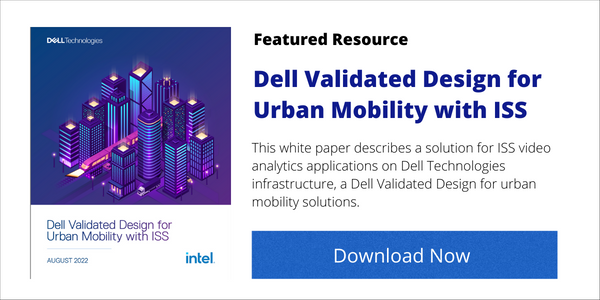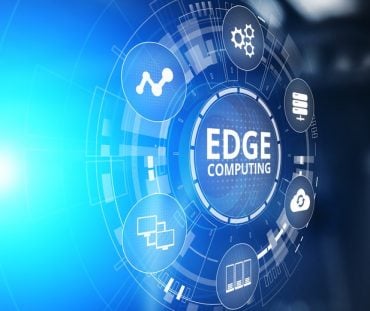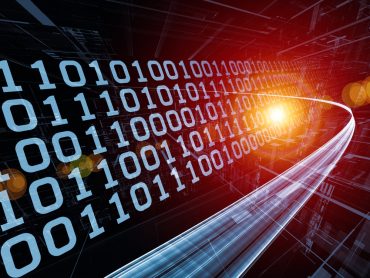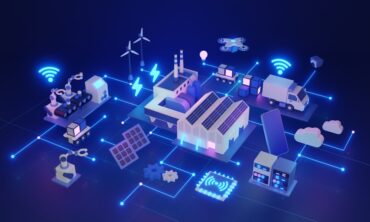
Edge and 5G-based networks are being employed to lay the groundwork for tomorrow’s generation of digital cities.
People keep flocking to cities, and the continuing rapid growth of urban areas across the globe means strains on transportation networks and public safety. However, emerging technologies – edge and 5G – promise to ease the strain.
More people across the globe are living in urban areas – which include central cities and their suburbs – than ever before, and these numbers keep rising. By 2030, more than one-fourth of the world’s population will be living in urban areas with more than one million inhabitants, the United Nations predicts.

This means growing traffic jams, increasing roadside deaths and injuries, and more pollution. City traffic management systems – many first designed and built decades ago – do not meet These modern challenges and cannot cope with fast-growing traffic problems. Administrators and operators of city control centers are simply no longer able to cope with the huge number of events that require responses. These challenges – and active solutions – are explored in a new white paper published by Dell.
Edge and 5G-based networks are being employed to lay the groundwork for tomorrow’s generation of digital cities (also known as smart cities), which will be better positioned to manage and ensure a better quality of life within these growing megacities. Technologies such as edge computing, 5G, data management, artificial intelligence (AI), cybersecurity, and agile application architectures converge, are creating opportunities for city planners and administrators to develop powerful new capabilities to deliver services more efficiently and effectively.
See also: Smart Cities: A Look to the Future Should Guide the Way
A digital city approach to mobility will help assure the availability of 24×7 streaming video and data feeds of high-traffic zones, as well as the performance of light rail, buses, and other transit systems. Administrators need the capability to assess trouble spots or delays and take remedial actions.
For road safety and enforcement, “law enforcement must monitor and detect violations at traffic intersections and on highways with a system which automatically captures an image of the vehicle that violates the rules,” the Dell report states. “Captured video and images are stored as evidence for future reference. Combined with the automated number plate recognition (ANPR) feature, this can be used to automatically identify violators and generate penalties as per local regulations, thus reducing such violations and improving traffic flow.” Violations that can be detected include red light violation detection, speed violation detection, wrong-way violation, and road traffic monitoring.
In addition, real-time monitoring can assist traffic managers in detecting queues of vehicles at intersections and identifying additional details to categorize traffic. “This information can be integrated with adaptive traffic light systems. This will allow for intelligent control of traffic lights by the adaptive traffic light systems based on the queue of vehicles at the intersection. Additional information can also be gathered to gain more insights, such as vehicle count and type identification – two-wheelers, four-wheelers (cars, trucks, vans), and trailers.” The monitoring system can also track unauthorized stopping, as well as track vehicles of interest.
The following elements will pave the way to providing such capabilities:
A robust IT infrastructure: A digital city IT infrastructure is an extremely busy one, working around the clock, with a vast array of video and data feeds from many locations and vehicles. “Cities today need to store and process vast amounts of data from cameras and other sensors deployed across the city,” the Dell report states. “This requires enterprise-grade infrastructure management to meet compute, storage, and networking needs.”
A highly integrated architecture: Video management and video analytics systems need to combine distributed security or business monitoring systems “into a single federated architecture that can support hierarchical information flow and scaling,” the Dell report advises. “This is a critical capability for cities implementing urban mobility solutions to bring intelligence from different regions into a common control center. This helps the city administrators manage and optimize the mobility situation by applying uniform response processes and orchestrating multiple agencies for an optimal response. The federation capability, along with a GIS intelligence feature, assists administrators in achieving an elevated situational awareness.”
A consolidated transport operations center: Cities need a centralized monitoring capability that brings together all this information where administrators can make decisions, according to the report. “This involves combining information from many siloed systems operating in multiple geographical areas. To solve this gap of combining several isolated monitoring and analytics systems into one common application.”








